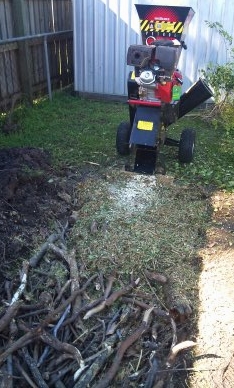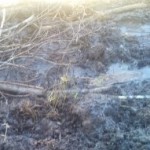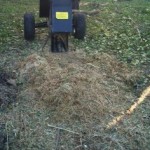After mentioning hugulculture in the worm post, I thought that I should see how and if it works.
When I started the gardens, I didn’t realize that I was starting in the lowest part of the yard. I have since been enlightened as it has rained consistently since February and the yard has been inundated on a number of occassions.
I chose the bed that is always wet to try the hugulculture experiment. In winter this section doesn’t get any sun because of a 2 metre fence on the northern side.
I dug out the bed to a depth of 25cm (10″). The first layer was branches, sticks and timber from around the property. I then got out the Chipper and used it to chip and shred all the prunings I had done recently. These went straight into the bed and brought it up to the previous ground level.
The idea of the hugulculture is to use the timber, wood and mulch as a storage for water and to alleviate the pressure for constant watering during dry spells. There was no problem getting water to the wood going into this garden bed as it was saturated.
You can make out that the bottom of the bed in one of the pictures. It contained water. This was good and bad. It made it relatively easy to dig out the soil, but the “soil” was waterlogged and part clay so it was impossible to work into a friable garden bed.
I was surprised to see a number of earth worms, as the first time I dug this bed I didn’t see a worm. I guess the combination of high moisture content, the compost I had applied and the growing of the mung beans as a cover crop has attracted them. The mung beans had succumbed to the excessive rainfall and being covered with water on three occasions.
The earth removed from the hole the wood, woodchips and mulch was placed in was returned to the garden bed on top. This made a garden bed about 25cm (10″) above the existing ground level.




